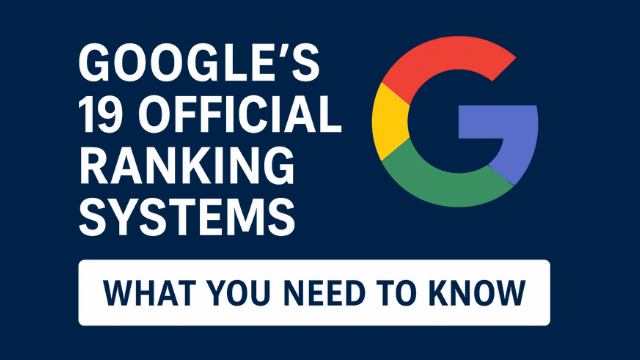PageRank and Link Analysis System: The Foundation of Google Search Rankings
When we talk about search engine rankings, PageRank and the Link Analysis System are two core concepts that changed how the internet is organized. Long before Google became the dominant search engine, early algorithms were already trying to understand which web pages were more important than others.
In this article, we’ll break down what link analysis is, how PageRank works, and how these systems still influence modern SEO today.
The Beginning of Search Engines
Back in the early days of the internet, there were no proper search engines. Instead, users relied on directory-style websites like DMOZ, where links were manually categorized. It was like using a phone book to find a website. This worked only when the web was small and simple.
However, the internet grew rapidly. By the 1990s, websites were multiplying fast, and users needed a better way to find relevant content. This gave rise to the first generation of search engines.
Archie, Jughead, and Aliweb: The Pre-Google Era
In 1987, Archie became the world’s first search engine. It didn’t index web pages but rather searched filenames from FTP servers. Later came Jughead and Aliweb, which began cataloging actual web content.
These early systems relied on keywords, meta tags, title tags, and H1 headings to decide which pages should rank higher. But there was one major issue: it was easy to manipulate keywords by stuffing them into a page. As a result, low-quality content often appeared at the top of search results.
The Breakthrough: Link Analysis System
To solve this manipulation problem, search scientists began exploring link-based ranking models. In 1996, Li Xing Hong introduced a new algorithm called RankDex, which evaluated a web page’s authority based on how many other pages linked to it.
This was revolutionary. For the first time, a system could measure the importance of a web page not by its own content, but by how many other websites referred to it. RankDex laid the groundwork for what would soon become Google’s PageRank algorithm.
What is PageRank?
Developed by Larry Page and Sergey Brin, PageRank was the foundation of Google’s ranking system. It took the idea of RankDex further by not just counting the number of links, but also analyzing the quality and authority of the pages giving those links.
In short, PageRank works on the principle that a web page is important if other important pages link to it. This brought a much more scientific and reliable method of organizing search results.
How PageRank Works (Simplified)
To understand PageRank, imagine the web as a network of roads between cities. Each page is a city. A link from one page to another is like a road connecting two cities.
If many popular cities (web pages) all have roads pointing to one city, that city is considered important. But it’s not just about quantity — the importance of the cities sending the links also matters.
Technically, PageRank uses a formula that takes into account:
- The number of inbound links
- The authority of the linking pages
- A damping factor (usually around 0.85), which simulates the chance of a user randomly jumping to a new page
The Random Surfer Model
To visualize this, think of a user as a “random surfer” who clicks on links across the internet. The user might keep clicking from one page to another or may randomly jump to a completely different page.
This behavior is mathematically simulated using the Random Surfer Model, which helps Google decide how often a page should be visited — and thus how important it is. The more often a page is “landed on” by the random surfer, the higher its PageRank score.
Why Quantity Isn’t Everything
Initially, people tried to game the system by creating hundreds of low-quality backlinks. However, PageRank evolved to reward quality over quantity. A single backlink from a trusted, high-authority website can be more valuable than dozens of links from weak or unrelated pages.
For example, a backlink from Wikipedia or BBC News can significantly improve your PageRank compared to links from obscure blogs.
The Role of the Damping Factor
One major issue with early models was that the surfer could get stuck in isolated clusters of pages. Google introduced a solution: the damping factor, which adds a probability that the user might jump to a completely unrelated page.
This prevents certain clusters from dominating the ranking and allows diverse, high-quality content across the web to be discovered and ranked.
Is PageRank Still Relevant Today?
Absolutely. While Google now uses over 200 ranking signals, but officially discloses 19 ranking signals, and PageRank remains a core part of its algorithm. Modern SEO strategies still rely heavily on acquiring backlinks from authoritative sources.
In fact, link analysis now plays a bigger role in trust signals, domain authority, and topical relevance, making it a critical part of any long-term SEO plan.
How Can You Apply This to Your Website?
Here are some practical tips:
- Earn backlinks from high-authority and topic-relevant websites
- Avoid spammy link-building tactics, as they can lead to penalties
- Create valuable content that naturally attracts links
- Use internal linking to distribute PageRank across your site
- Focus on building relationships with niche-relevant blogs and platforms
FAQs about PageRank and Link Analysis
Final Thoughts
Understanding the PageRank and Link Analysis System gives you a strong foundation in SEO. While algorithms continue to evolve, the core principle stays the same: valuable content earns valuable links. By focusing on relevance, authority, and quality, you can build a web presence that stands the test of time — not just for Google, but for your users as well.





It’s amazing how PageRank, despite its age, still underpins much of Google’s search ranking system. I think its focus on link authority and relevance is one of the reasons it has stood the test of time.